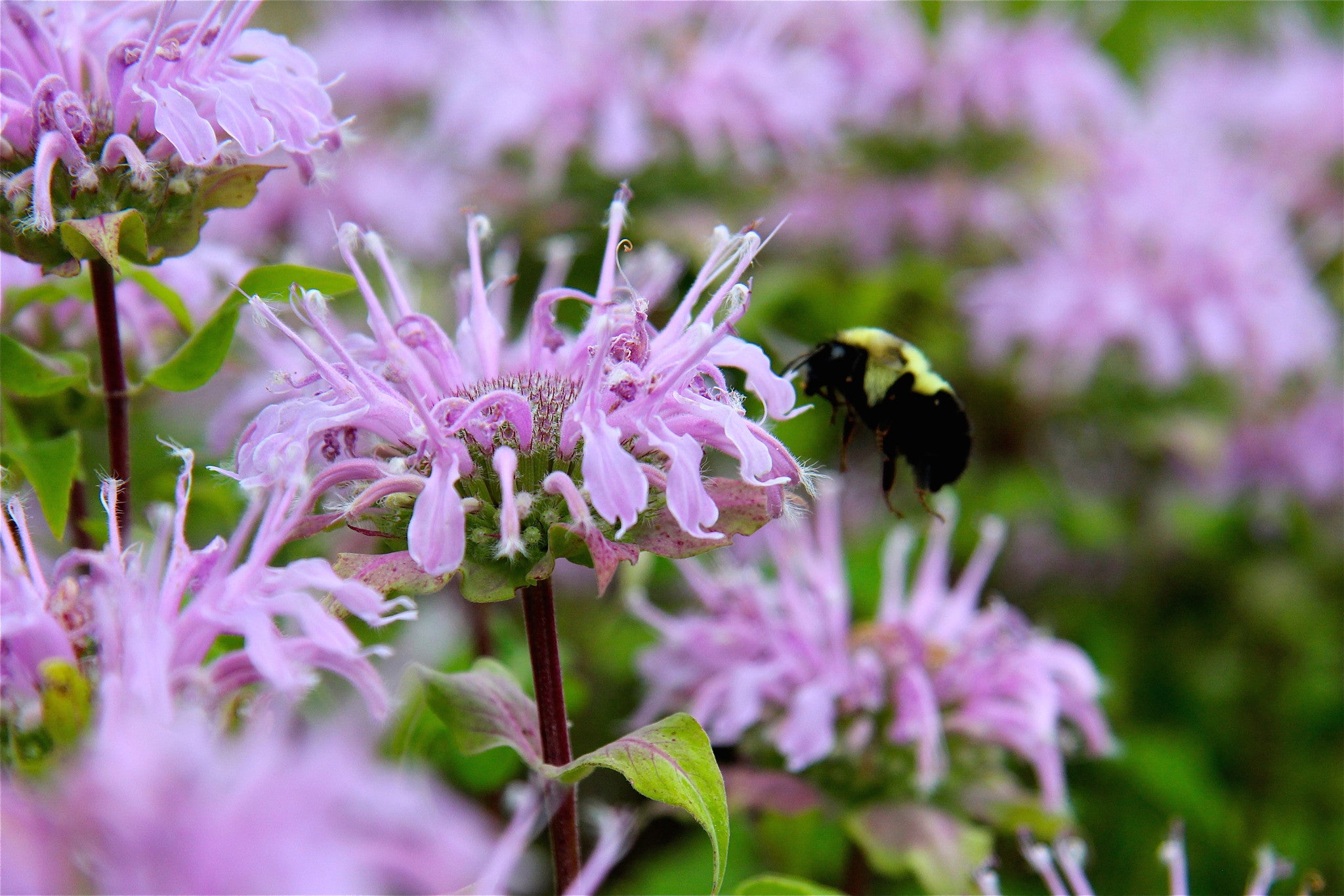Monarda 'Sagittarius'
Approx. 0.5 litre pot
About this cultivar:
Monarda 'Sagittarius' has a clumping habit with pointed, green leaves and stems. The sweetly-aromatic plant carries pale lilac flowers with green bracts, tinged red, and green calyces in shaggy heads from mid to late summer. Bred by Piet Oudolf. Mildew resistant. Similar to M 'Elsie’s Lavender' but shorter and deeper purple.
- Position: Full sun, partial shade
- Soil: Almost any soil, grows well in Ballyrobert
- Flowers: July, August, September
- Other features: Bees and Butterflies, Scented
- Hardiness: Fully hardy, grows well in Ballyrobert
- Habit: Clump forming
- Foliage: Deciduous
- Height: 60 - 90 cm (2 - 3 ft)
- Spread: 30 - 60 cm (1 - 2 ft)
- Time to full growth: 2 to 5 years
- Plant type: Herbaceous Perennial
- Colour: Green, pink
- Goes well with: Astilbe, Stipa, Helenium, Echinops
About this genus:
Monarda (mon-ar-da) was named for the Spanish botanist Nicolás Monardes, who wrote a book, Joyfull Newes Out of the New Founde Worlde, in 1574 describing plants of the New World. Commonly known as Bergamot, the genus contains roughly 16 species of annual and perennial mint relatives that are endemic to North America. Native Americans used Monarda as an antiseptic (it contains thymol, found in commercial mouthwash) and, because of the strong mint/oregano flavor and pleasant bergamot orange scent of the leaves, brewed it as tea and used it as seasoning. They also used it to prevent excessive flatulence. Is there nothing this plant can't do?
The unusual Monarda flowers bloom in a variety of colours from white to pink, red, and purple. The round flower heads are composed of clusters of small tubular flowers that appear from early summer onward.
Monarda is a tough perennial wildflower, but can suffer from powdery mildew. Good air circulation is supposedly important to hold back powdery mildew, so you may read 'don't overcrowd your Monarda'. In addition many named cultivars supposedly have been selected for improved disease resistance. Personally I think this is all a load of BS. I have read studies done by the amazing Dr Perry at the University of Vermont differentiating cultivars by mildew resistance. However, we have found that this powdery problem is so idiosyncratic we don't want to give hopeful answers! For instance, we've had two clumps of the EXACT same cultivar 30 yards away from each other; one had powdery mildew and one didn't! I think it is just a risk you take with this plant... but it is worth it! (Caveat - we're trialing one cultivar that hasn't had any powdery mildew..yet..watch this space!).
If mildew is an issue the best way to grow Monarda is to put something shorter in front, so that only the flowers and the top of the foliage canopy are visible.
Monarda will apparently do best in full sun and moist, well-drained soil - haven't you heard that before!?!? (yawn); what a cop-out. With the cultivars we have, in our experience, part shade is fine as it any non-waterlogged soil.
An engaging addition to the border or a meadow setting, Bergamot offers a pleasing contrast to the more undefined forms of the garden, as well as to the linear aspect of grasses. Companion ideas? Try with Astilbe, Stipa, Helenium, Echinops


